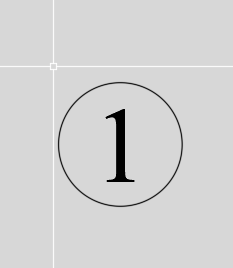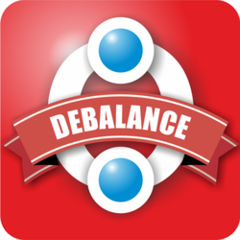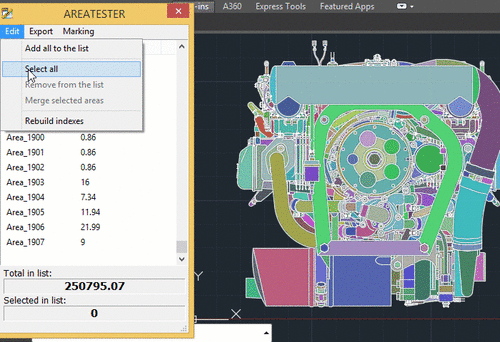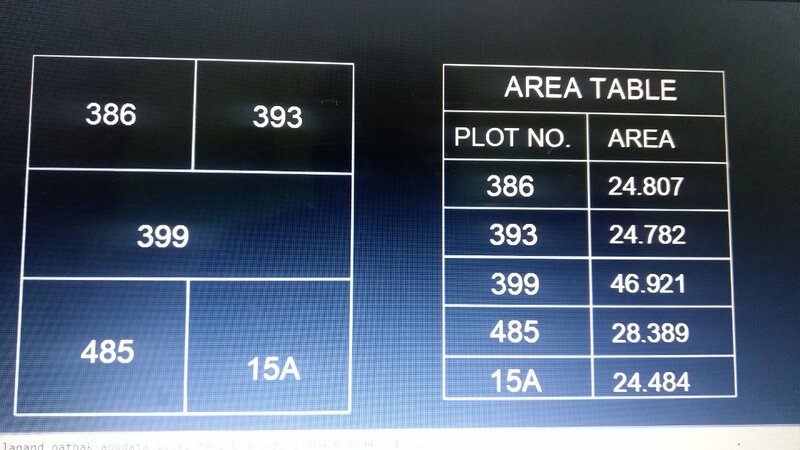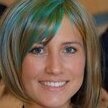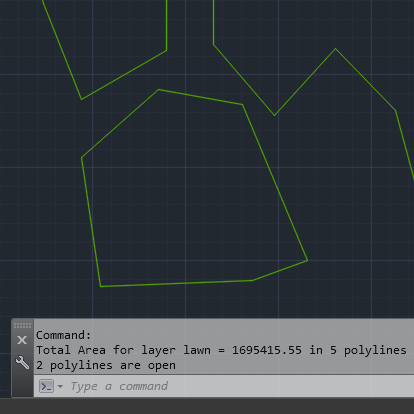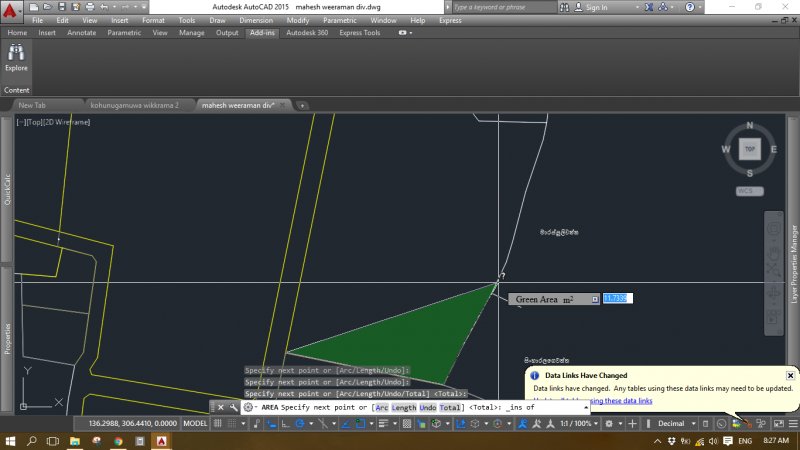Search the Community
Showing results for tags 'area'.
-
Hi all, I need a lisp shortcut to save me a whole lot of data entry. Basically I have 100 or so drawings, very similar in format. In each drawing there are some tables, with one of the tables containing some key information we need to extract. My thinking was that instead of typing them out all manually I could use lisp and EZscript to open each drawing, select the correct table (using a crossing window?) export the table to a spreadsheet in a specific folder, close the drawing and move on to the next one. (So there would be as many spreadsheets as drawings.) Thats the first challenge, the second is to combine all those spreadsheets to include all the information. I would then cull out all the irrelevent data. Too hard?
-
Hello, I am new to LISP, I found the Area-to-Table LISP from Lee Mac, which is very useful, but I need it to write the area in the third column of the table instead of the second. I modified some parameters to create the third column and the first row of the table works, but the following rows don't. Also I would like to have the numbers that are inserted in the centroid in a circle, but this could be optional. The text should be 0.3 in height and the circle should have a 0.25 radius. I defined the style at the beginning, but the height does not work. I would be grateful for some help, thank you! This is the LISP: (defun c:Recap nil (AreaLabel t)) ;; Areas to Table ;start of sectin added to define text style (entmakex '( (0 . "STYLE") (100 . "AcDbSymbolTableRecord") (100 . "AcDbTextStyleTableRecord") (2 . "room_Style") (70 . 0) (40 . 0.3);<- text height defined (41 . 1.0) (50 . 0.0) (71 . 0) (42 . 2.0) (3 . "times.ttf") (4 . "") ) ) (setvar 'textstyle "room_Style") ; end of section added to define text style ;;------------------------------------------------------------;; (defun AreaLabel ( flag / *error* _startundo _endundo _centroid _text _open _select _getobjectid _isannotative acdoc acspc ap ar as cf cm el fd fl fo n of om p1 pf pt sf st t1 t2 t3 tb th ts tx ucsxang ucszdir ) ;;------------------------------------------------------------;; ;; Adjustments ;; ;;------------------------------------------------------------;; (setq h1 "Recap Table" ;; Heading t1 "Numer" ;; Number Title t2 "Room" ;;Area Name t3 "Area" ;; Area Title pf "" ;; Number Prefix (optional, "" if none) sf "" ;; Number Suffix (optional, "" if none) ap "" ;; Area Prefix (optional, "" if none) as "" ;; Area Suffix (optional, "" if none) cf 1.0 ;; Area Conversion Factor (e.g. 1e-6 = mm2->m2) fd t ;; Use fields to link numbers/objects to table (t=yes, nil=no) fo "%lu6%qf1" ;; Area field formatting ) ;;------------------------------------------------------------;; (defun *error* ( msg ) (if cm (setvar 'CMDECHO cm)) (if el (progn (entdel el) (setq el nil))) (if acdoc (_EndUndo acdoc)) (if (and of (eq 'FILE (type of))) (close of)) (if (and Shell (not (vlax-object-released-p Shell))) (vlax-release-object Shell)) (if (null (wcmatch (strcase msg) "*BREAK,*CANCEL*,*EXIT*")) (princ (strcat "\n--> Error: " msg)) ) (princ) ) ;;------------------------------------------------------------;; (defun _StartUndo ( doc ) (_EndUndo doc) (vla-StartUndoMark doc) ) ;;------------------------------------------------------------;; (defun _EndUndo ( doc ) (if (= 8 (logand 8 (getvar 'UNDOCTL))) (vla-EndUndoMark doc) ) ) ;;------------------------------------------------------------;; (defun _centroid ( space objs / reg cen ) (setq reg (car (vlax-invoke space 'addregion objs)) cen (vlax-get reg 'centroid) ) (vla-delete reg) (trans cen 1 0) ) ;;------------------------------------------------------------;; (defun _text ( space point string height rotation / text ) (setq text (vla-addtext space string (vlax-3D-point point) height)) (vla-put-alignment text acalignmentmiddlecenter) (vla-put-textalignmentpoint text (vlax-3D-point point)) (vla-put-rotation text rotation) text ) ;;------------------------------------------------------------;; (defun _Open ( target / Shell result ) (if (setq Shell (vla-getInterfaceObject (vlax-get-acad-object) "Shell.Application")) (progn (setq result (and (or (eq 'INT (type target)) (setq target (findfile target))) (not (vl-catch-all-error-p (vl-catch-all-apply 'vlax-invoke (list Shell 'Open target)) ) ) ) ) (vlax-release-object Shell) ) ) result ) ;;------------------------------------------------------------;; (defun _Select ( msg pred func init / e ) (setq pred (eval pred)) (while (progn (setvar 'ERRNO 0) (apply 'initget init) (setq e (func msg)) (cond ( (= 7 (getvar 'ERRNO)) (princ "\nMissed, try again.") ) ( (eq 'STR (type e)) nil ) ( (vl-consp e) (if (and pred (not (pred (setq e (car e))))) (princ "\nInvalid Object Selected.") ) ) ) ) ) e ) ;;------------------------------------------------------------;; (defun _GetObjectID ( doc obj ) (if (vl-string-search "64" (getenv "PROCESSOR_ARCHITECTURE")) (vlax-invoke-method (vla-get-Utility doc) 'GetObjectIdString obj :vlax-false) (itoa (vla-get-Objectid obj)) ) ) ;;------------------------------------------------------------;; (defun _isAnnotative ( style / object annotx ) (and (setq object (tblobjname "STYLE" style)) (setq annotx (cadr (assoc -3 (entget object '("AcadAnnotative"))))) (= 1 (cdr (assoc 1070 (reverse annotx)))) ) ) ;;------------------------------------------------------------;; (setq acdoc (vla-get-activedocument (vlax-get-acad-object)) acspc (vlax-get-property acdoc (if (= 1 (getvar 'CVPORT)) 'Paperspace 'Modelspace)) ucszdir (trans '(0. 0. 1.) 1 0 t) ucsxang (angle '(0. 0. 0.) (trans (getvar 'UCSXDIR) 0 ucszdir)) ) (_StartUndo acdoc) (setq cm (getvar 'CMDECHO)) (setvar 'CMDECHO 0) (setq om (eq "1" (cond ((getenv "LMAC_AreaLabel")) ((setenv "LMAC_AreaLabel" "0"))))) (setq ts (/ (getvar 'TEXTSIZE) (if (_isAnnotative (getvar 'TEXTSTYLE)) (cond ( (getvar 'CANNOSCALEVALUE) ) ( 1.0 )) 1.0 ) ) ) (cond ( (not (vlax-method-applicable-p acspc 'addtable)) (princ "\n--> Table Objects not Available in this Version.") ) ( (= 4 (logand 4 (cdr (assoc 70 (tblsearch "LAYER" (getvar 'CLAYER)))))) (princ "\n--> Current Layer Locked.") ) ( (not (setq *al:num (cond ( (getint (strcat "\nSpecify Starting Number <" (itoa (setq *al:num (1+ (cond ( *al:num ) ( 0 ))))) ">: " ) ) ) ( *al:num ) ) ) ) ) ( flag (setq th (* 2. (if (zerop (setq th (vla-gettextheight (setq st (vla-item (vla-item (vla-get-dictionaries acdoc) "ACAD_TABLESTYLE" ) (getvar 'CTABLESTYLE) ) ) acdatarow ) ) ) ts (/ th (if (_isAnnotative (vla-gettextstyle st acdatarow)) (cond ( (getvar 'CANNOSCALEVALUE) ) ( 1.0 )) 1.0 ) ) ) ) ) (if (cond ( (progn (initget "Add") (vl-consp (setq pt (getpoint "\nPick Point for Table <Add to Existing>: "))) ) (setq tb (vla-addtable acspc (vlax-3D-point (trans pt 1 0)) 2 3 th (* 1.2 th (max (strlen t1) (strlen t2) (strlen t3))) ;chage tabel row, column, column height ) ) (vla-put-direction tb (vlax-3D-point (getvar 'UCSXDIR))) (vla-settext tb 0 0 h1) (vla-settext tb 1 0 t1) (vla-settext tb 1 1 t2) (vla-settext tb 1 2 t3) (while (progn (if om (setq p1 (_Select (strcat "\nSelect Object [Pick] <Exit>: ") '(lambda ( x ) (and (vlax-property-available-p (vlax-ename->vla-object x) 'area) (not (eq "HATCH" (cdr (assoc 0 (entget x))))) (or (eq "REGION" (cdr (assoc 0 (entget x)))) (vlax-curve-isclosed x)) ) ) entsel '("Pick") ) ) (progn (initget "Object") (setq p1 (getpoint "\nPick Area [Object] <Exit>: "))) ) (cond ( (null p1) (vla-delete tb) ) ( (eq "Pick" p1) (setq om nil) t ) ( (eq "Object" p1) (setq om t) ) ( (eq 'ENAME (type p1)) (setq tx (cons (_text acspc (_centroid acspc (list (setq p1 (vlax-ename->vla-object p1)))) (strcat pf (itoa *al:num) sf) ts ucsxang ) tx ) ) (vla-insertrows tb (setq n 2) th 1) (vla-settext tb n 2 ;changed here from 1 to 2 (if fd (strcat "%<\\AcObjProp Object(%<\\_ObjId " (_GetObjectID acdoc p1) ">%).Area \\f \"" fo "\">%" ) (strcat ap (rtos (* cf (vla-get-area p1)) 2) as) ) ) (vla-settext tb n 0 (if fd (strcat "%<\\AcObjProp Object(%<\\_ObjId " (_GetObjectID acdoc (car tx)) ">%).TextString>%" ) (strcat pf (itoa *al:num) sf) ) ) nil ) ( (vl-consp p1) (setq el (entlast)) (vl-cmdf "_.-boundary" "_A" "_I" "_N" "" "_O" "_P" "" "_non" p1 "") (if (not (equal el (setq el (entlast)))) (progn (setq tx (cons (_text acspc (_centroid acspc (list (vlax-ename->vla-object el))) (strcat pf (itoa *al:num) sf) ts ucsxang ) tx ) ) (vla-insertrows tb (setq n 2) th 1) (vla-settext tb n 1 (strcat ap (rtos (* cf (vlax-curve-getarea el)) 2) as)) (vla-settext tb n 0 (if fd (strcat "%<\\AcObjProp Object(%<\\_ObjId " (_GetObjectID acdoc (car tx)) ">%).TextString>%" ) (strcat pf (itoa *al:num) sf) ) ) (redraw el 3) nil ) (vla-delete tb) ) ) ) ) ) (not (vlax-erased-p tb)) ) ( (and (setq tb (_Select "\nSelect Table to Add to: " '(lambda ( x ) (eq "ACAD_TABLE" (cdr (assoc 0 (entget x))))) entsel nil ) ) (< 1 (vla-get-columns (setq tb (vlax-ename->vla-object tb)))) ) (setq n (1- (vla-get-rows tb)) *al:num (1- *al:num)) ) ) (progn (while (if om (setq p1 (_Select (strcat "\nSelect Object [" (if tx "Undo/" "") "Pick] <Exit>: ") '(lambda ( x ) (and (vlax-property-available-p (vlax-ename->vla-object x) 'area) (not (eq "HATCH" (cdr (assoc 0 (entget x))))) (or (eq "REGION" (cdr (assoc 0 (entget x)))) (vlax-curve-isclosed x)) ) ) entsel (list (if tx "Undo Pick" "Pick")) ) ) (progn (initget (if tx "Undo Object" "Object")) (setq p1 (getpoint (strcat "\nPick Area [" (if tx "Undo/" "") "Object] <Exit>: "))) ) ) (cond ( (and tx (eq "Undo" p1)) (if el (progn (entdel el) (setq el nil))) (vla-deleterows tb n 1) (vla-delete (car tx)) (setq n (1- n) tx (cdr tx) *al:num (1- *al:num)) ) ( (eq "Undo" p1) (princ "\n--> Nothing to Undo.") ) ( (eq "Object" p1) (if el (progn (entdel el) (setq el nil))) (setq om t) ) ( (eq "Pick" p1) (setq om nil) ) ( (and om (eq 'ENAME (type p1))) (setq tx (cons (_text acspc (_centroid acspc (list (setq p1 (vlax-ename->vla-object p1)))) (strcat pf (itoa (setq *al:num (1+ *al:num))) sf) ts ucsxang ) tx ) ) (vla-insertrows tb (setq n (1+ n)) th 1) (vla-settext tb n 1 (if fd (strcat "%<\\AcObjProp Object(%<\\_ObjId " (_GetObjectID acdoc p1) ">%).Area \\f \"" fo "\">%" ) (strcat ap (rtos (* cf (vla-get-area p1)) 2) as) ) ) (vla-settext tb n 0 (if fd (strcat "%<\\AcObjProp Object(%<\\_ObjId " (_GetObjectID acdoc (car tx)) ">%).TextString>%" ) (strcat pf (itoa *al:num) sf) ) ) ) ( (vl-consp p1) (if el (progn (entdel el) (setq el nil))) (setq el (entlast)) (vl-cmdf "_.-boundary" "_A" "_I" "_N" "" "_O" "_P" "" "_non" p1 "") (if (not (equal el (setq el (entlast)))) (progn (setq tx (cons (_text acspc (_centroid acspc (list (vlax-ename->vla-object el))) (strcat pf (itoa (setq *al:num (1+ *al:num))) sf) ts ucsxang ) tx ) ) (vla-insertrows tb (setq n (1+ n)) th 1) (vla-settext tb n 1 (strcat ap (rtos (* cf (vlax-curve-getarea el)) 2) as)) (vla-settext tb n 0 (if fd (strcat "%<\\AcObjProp Object(%<\\_ObjId " (_GetObjectID acdoc (car tx)) ">%).TextString>%" ) (strcat pf (itoa *al:num) sf) ) ) (redraw el 3) ) (princ "\n--> Error Retrieving Area.") ) ) ) ) (if el (progn (entdel el) (setq el nil))) ) ) ) ) (setenv "LMAC_AreaLabel" (if om "1" "0")) (setvar 'CMDECHO cm) (_EndUndo acdoc) (princ) ) ;;------------------------------------------------------------;; ;; End of File ;; ;;------------------------------------------------------------;;
-
Version 2.1.30
7,407 downloads
AreaTester is a efficient plug-in for AutoCAD. It allows you to quickly measure the area in AutoCAD and gives you advanced capabilities to process the results of the calculations in the further workflow (annotate the the areas in the drawing, convert the received data to different spreadsheet formats, etc.). The plugin calculates not only the areas of enclosed objects, such as a polyline or circle, but also any other shapes formed by the intersection and connection of various types of objects, which include lines, arcs, splines and many other AutoCAD basic objects. At the same time, to calculate the area of any enclosed shape, you only need to point the crosshair of the cursor on it and the area value will be instantly displayed in the context window above the cursor. In addition, the user can create the necessary list of the areas in the main application window for the further workflow. All these areas are summed automatically in the created list. The total result of the summation is displayed at the bottom of the main window of the app. One of the main features of AreaTester, compared to the standard AutoCAD tools, is the ability to determine the area value of any bounded shape excluding the areas formed by objects that have got inside such an shape (the so-called "islands"). This option significantly simplifies the user’s work on calculating areas in AutoCAD, eliminating the need for additional mathematical operations. Key features of the AreaTester for AutoCAD plugin: Automatic calculation of the all areas in a drawing. Annotating the areas directly in a drawing. Drawing boundaries of the shapes in the form of polylines. Exporting the generated list of areas to the clipboard or some convenient data format (* .txt, * .csv). Adding the table of the area list to a drawing. For more information visit the official website of the AreaTester app. -
Find Hatch without area, hatch with error
César Petersen posted a topic in AutoLISP, Visual LISP & DCL
Hello! I often need to count areas with hatches, using the cumulative area property. And many times, we get bad hatches without area, needing to painstakingly go one by one finding the bad hatch to fix it, sometimes repeating for multiple hatches I tried to find a LISP routine for that without sucess, so i made my own and i'd like to share It loops over the selected hatches, accumulating the bad ones on an empty selection set, highlighting it afterwards. The only little thing bothering me is the (sssetfirst nil serr) function, that highlights the set, sometimes it need an extra click on the screen to show the grips, i tried putting a (command "_REGEN") and (princ) after, without much sucess. I hope it's useful! findBadHatches.lsp -
Dear members, Any lisp program or trick to make a area table From a plan. I want a area table with plot number text along with area . I will select all at time, the automatically generate area table. Please See the attached image. AREA TABLE OF POLYGON.dwg
- 18 replies
-
- plot
- area value
-
(and 1 more)
Tagged with:
-
Hi I work in a company, people come to us with their plot registry, on which are the dimensions (north,east,south,west) and area of their plots. But there are no angles. For example, a plot of 25 * 10 meters with an area (according to the mathematical calculations) should be 250 square meters. But 244.95 is listed on the registry.My question is how do I quickly draw this plot (according to the registry) in AutoCAD? Is there any lisp for this?
-
Many users are faced with the task of calculating the area when editing various drawings in the process of working in AutoCAD. There are several ways to calculate the area in AutoCAD. Let's take a closer look at these methods and analyze their strengths and weaknesses. Getting the area value from the properties of an object. If such a enclosed shape is formed by one object, for example, a circle, enclosed polyline or region, then its area value can be getted from the properties of this object. The property palette can be opened pressing Ctrl + 1. The _LIST command also allows you to get the area value from the properties of the enclosed object. It should be noted that the manipulations associated with getting the values of the areas of a large number of such objects can be quite time-consuming. If there is a need to calculate the area of the enclosed shape formed by the connection or intersection of various types of objects, the complexity of calculating the area such a shape usually increases. The fact is that the user has to use some AutoCAD tool to create an additional enclosed object in place of this shape, for example using the _BOUNDARY, _PLINE commands or create a hatch object using the _HATCH command. It should be remembered that such a redundant object is likely to require subsequent removal at the end of all the manipulations necessary to calculate the area in AutoCAD. The drawbacks of this method include all the drawbacks characteristic of these commands (_BOUNDARY, _HATCH) associated with inaccuracy, and sometimes the impossibility of constructing some boundaries. Calculating the area of an enclosed shape using the _AREA command. There is another way to get the area of eclosed shape in the standard set of AutoCAD tools - this is the _AREA command. This command is specifically intended to quickly calculate the area of such a shape without additional creating of an enclosed object. The obvious advantages of the _AREA command include the ability to get the area value of a shape that have gaps along the outline. But basically this method is more suitable for calculating the areas of simple polygons. When working with large and complex enclosed shapes, this method demonstrates very mediocre performance, because in fact, the user has to manually (point by point) re-draw boundary of this shape. If the boundary elements include various kinds of splines, then the exact calculation of the area in this case is a big question due to the limited capabilities of the _AREA command when working with similar objects. Calculating the area of any enclosed shape in AutoCAD using AreaTester free plugin. Currently, one of the most effective methods for calculating the area of any enclosed shape in AutoCAD is the method using the AreaTester free plugin. In this case (if plugin is installed into AutoCAD environment), it becomes possible to calculate not only the areas of enclosed objects, such as a polylines or circles, but also any other shapes formed by the intersection and connection of various types of objects, which include lines, arcs, splines and many other AutoCAD basic objects. At the same time, to calculate the area of any enclosed shape, you only need to point the crosshair of the cursor on it and the area value will be instantly displayed in the context window above the cursor. In addition, the user can create the necessary list of the areas in the main application window for the further work. All these areas are summed automatically in the created list. The total result of the summation is displayed at the bottom of the main window of the app. One of the key features of AreaTester, compared to the standard AutoCAD tools described above, is the ability to determine the area value of any enclosed shape excluding the areas formed by objects that have got inside such an shape (the so-called "islands"). This option significantly simplifies the user’s work on calculating areas in AutoCAD, eliminating the need for additional mathematical operations. Additional features of the AreaTester for AutoCAD free plugin: - Automatic calculation of the all areas in a drawing. - Marking of the areas directly in a drawing. - Exporting the generated list of areas to the clipboard or some convenient data format (* .txt, * .csv). - Adding the table of the area list to a drawing. Download AreaTester.
- 14 replies
-
- area
- calculating
-
(and 1 more)
Tagged with:
-
-
Hello all I need a lisp to type the area of a geometry by picking an internal point.. thanx for all
-
Hi All, Could anyone help me please?... I have been looking for a LISP file that calculates sq.ft. of a closed polyline and generates a sq.ft. text inside the polyline. Unit of the file that I am working on is metric, but I want sq.ft. instead of sq.mm.. Thank you so much in advance!
-
i'm looking for a simple area routine base on the dimension not the line. i want to be able to click on 2 cotation that i got from the dimlinear command and have the area "print" in a text format where i want to. I know a routine with a lot of visual lisp routine in it, but i'm looking a version with a standard/ basic lisp. thank you.
-
Field command capabilities
erratic posted a topic in AutoCAD 2D Drafting, Object Properties & Interface
Hopefully I am just unaware of a setting or method for doing this but so far the field command is handy but missing something. Associative updates. When a polyline is drawn and used for calculating the area the field command does a quick job of extracting that info into a field text element. Problem is when that polyline boundary is changed the "field text" that was established previously does not update. Is this even possible or am I S.O.L.? -
Hi All, I need some help here. I'v been using a autolisp (obtained from a friend) to calculate floor area with AutoCAD 2007. However recently I've upgraded my AutoCAD to 2013 and I realised the lisp coudn't function completely. I've attached the lisp file here, really hope someone can help to rectify so that it works for AutoCAD 2013. Fyi I knows nothing about writting lisp code... many thanks in advance! (not sure why this code looks so massive compared to others..) To share with those who may be interested, this lisp allows you to select multiple polylines (eg. floor area), followed by select those polylines representing regions to be subtracted (eg. void area), it will help you tabulate all the polyline parcels (floor areas subtract floor void) with end result and with labels for each parcel. Enjoy! ATAB.lsp
- 14 replies
-
- calculate area
- area
-
(and 1 more)
Tagged with:
-
Prepare Land Acquisition Reports of Survey Boundaries. Tharwat, Lee mac
sanju2323 posted a topic in AutoLISP, Visual LISP & DCL
We preparing an Area report of Land Acquisition and Utilization of Survey Boundaries along the Road Project area. First i create boundary command to which pick point acquired land in between ROW (Right of way) and then we use the area command to select polyline in Area Layer to put the manually in excel survey number and area one by one. It takes a lot of time to make it, so there is easy way to make it lisp or any program. sorry for my bad english thank you for support LUPUNGGUTU.xls PURANA CHAIBASA.xls Sample copy.dwg -
Exclude from macro a specific area of drawing
ElCidCampeador posted a topic in .NET, ObjectARX & VBA
Is it possible to exclude from a vba macro for Autocad a specific region? For example, apply this macro not to all modelspace but only to a part (which has not lines as boundaries but defined only by position reference x,y in autocad). Thanks- 2 replies
-
- modelspace
- area
-
(and 1 more)
Tagged with:
-
Hello everybody, This is my first post on CADTutor. I've been reading alot here even before I became a member, but it is time for me to join the community with a question since I cannot find the exact answer to mine. Question: Is it possible to sum numbers in Mtext fields created with lisps? AT.LSP OT.LSP I edited them to suit my needs with prefix and suffix and decimal precision (they are in the core the same, originally made by JTB), one is displaying area of selected polyline (AT.lsp) and the other perimeter/length (OT.lsp). I would like to preserve possibility of field updating so when polyline/area is changed I just enter regenall. I copied Mtext fields maually to "oldstyletable" made from lines and mtext, mtext fields. See attached dwg for example. I've seen this thread: http://www.cadtutor.net/forum/showthread.php?43699-Sum-Text-Strings-to-Text-Field... I tried all the lisps but none are applicable to my problem. I get only #### even after regen (I think it's maybe because of prefix and suffix, but don't know). I've managed to work only with text and then my updating Mtext fields are, for sure, gone. Please advise. TEST1.dwg
-
report list vertex of individua; closed polyline to get area
odixs posted a topic in AutoLISP, Visual LISP & DCL
is there anyway to create report of some closed polyline and get the list of vertex each one closed polyline so i can have individual report of each closed polyline which i have in a specific layer ? thank in advance -
i want to modified "area" command. see below picture. Click the first point. Click the second point. Click to third point, moving the mouse pointer along the line, the green part of the area, showing the edit is a must.
-
- area split
- area
-
(and 1 more)
Tagged with:
-
how to divide a closed polygon
malkasun posted a topic in AutoCAD 2D Drafting, Object Properties & Interface
how to divide a polygon into 3 equal polygons (same area or we known area)? I wanted to divide the polygon shown in the screenshot below into equal 3 polygons (with same area), but I couldn't figure out if these is some commands or workflow to perform this issue is the "trial and error" is the only technique by which this issue can be done? thank you in advance, regards malkasun -
I'm working in millimeters and whenever I use the AREA command I end up with a large number. I want to know if you can customize the AREA command somehow to show meters squared automatically.
-
Hello Everyone, I'm new on forum. I search for a very simple LISP which inserts (on centre in object or bottom, no matter) text with AREA and PERIMETER from RECTANGULAR or closed LINES. e.g. area - "1,23 m2" and perimeter - "2,45 m" Best when I can select more objects and than for the all selected the text will be written. And this function for the two parameter should be writen together. Not that I must first use one command than second. The font height should be possible to change. Precission should be: 0,001m or 0,01m. Could anyone help me? Sorry for my english Thanks!
-
I don't know if this requires a lisp or a script solution.. I regularly work on multi-tabbed drawings. I often encounter situations where on a tab, the extents are much smaller than the title block. The title block extends off/beyond the existing extents (defined by the hidden/dashed line.) Is that the printable area or the extents? What I typically do is: zoom extents, Go to plot, change something such as: unpick the fit to paper check box, pick it again (so that something changes) Pick Apply to layout button then hit Cancel. The extents of the drawing then automatically change (or are updated) to the correct extents of the title block. (My dashed line now surrounds my entire title block.) Regen or Regenall doesn't do it. Zooming extents alone doesn't fix it either. Having to do those steps on all 30 tabs of a drawing is a PITA. Any suggestions or solutions that any of you are aware of? Is there another way of accomplishing this? I would SO APPRECIATE a workable solution...
-
Hi, everybody I just want to ask how to make my drawing as region that cover the close area. When i select the circle object and tooth object, it not become a region . I already connect all the line but its not working.Hope that everybody in here can help. 9_8 autocad kecikkkan tooth.dwg
- 14 replies
-
- problem
- connections
-
(and 2 more)
Tagged with:
-
Area Command Adjusts the UCS
Syntax0111 posted a topic in AutoCAD 2D Drafting, Object Properties & Interface
Hello everyone, I am having a bit of an issue when using the AREA command. I've noticed that the UCS (User Coordinate System) changes when I attempt to take the area of an existing object (when I trace over a rectangle, for example). The changes to the UCS are dramatic, the drawing zooms out and rotates depending on how I traced the object. The change occurs when I click the third time. This reminds me of setting a new UCS where you would first select the x-axis direction with two clicks followed by the direction of the y-axis with one click. There is no change to UCS when I trace out an arbitrary shape. Here's what I've been able to figure out and it involves the UCSFOLLOW setting. When I set the UCSFOLLOW variable to 0, everything works great and I don't get the zooming out and rotation. When it's set to 1, well, the PLAN VIEW changes by zooming out and rotating. If I zoom back in and complete the area and press enter, everything goes back to normal. So I still manage to get the area of the object that I want, but the zooming out and rotation makes it very inconvenient. Okay, I understand that the UCSFOLLOW solves the problem, but is it normal for the AREA command to make changes to the UCS by default? I ask because creating a new drawing, creating a rectangle and using the AREA command doesn't cause the same UCS change, regardless of the UCSFOLLOW setting. This makes me think the drawing I am working on has objects with a coordinate system that differs from the WCS, right? Is there a way to have the UCSFOLLOW active while not having the AREA command alter the UCS? If I left crucial information out, please let me know, and I'll elaborate! I'm using AutoCAD 2012. Thanks! -
HELLO AGAIN CADTutor! I have a problem of weather of not you can change the accuracy of the calculation of areas in AutoCAD 2011. In my line of work, we need to find the areas to exact precision, though it seems that my AutoCad is messing with the calculations and rounding up. E.G AREA - .017666 and turns it into .002 I calculate the Area thorught the usage of Polylines, and or the area command when i need to. Can anyone please help me find some insight on to this, mabye to change it to give me EXATE AREA!? Any and all help is greatly appreciated, those who are deemed awesome get a virtual cake, and the cake is NOT a lie....

